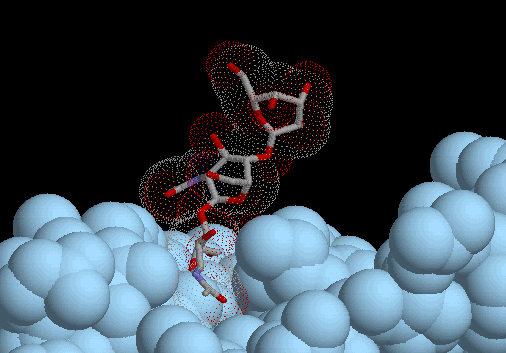
Glycans attached to proteins are vital building blocks of the cell surface and environment.
Eukariotes use glyco-proteins and proteo-glycans to build their extracelluar matrix in tissues and organs while at their cellular surface they use glycoproteins for recognition and adhesion due to the ability of these structures to transiently interact with other proteins. Inside cells in addition, many constitutive luminal proteins of vesicles along the secretory pathway are also glycosylated.
Glycosylation comes in two flavors:
-a) N-glycosylation when glycans are attached to the nitrogen of the side-chain of an Asn; and
-b) O-glycosylation when these are attached to the oxigen of the sidechain of a Ser or Thr.
Glycosylation starts co-translationally in the endoplasmic reticulum (ER) with the so-called "early" N-glycosylation and is completed in the Glogi the next compartment along the secretory pathway.
This separation is intriguing and was shown lately to relate to the fact that N-glycans do not simply decorate proteins but are used by the cells to control protein folding and routing in early maturation stages, with particular relevance for biotechnology and pharmaceutical industry, as quality control is the main cause that prevents a large number of glycosylated proteins, usefull in molecular medicine, to be obtained by classical biotechnologies or even in transformed yeasts reproducing eukariotic glycosylation
Investigating the strutural relation between glycans and the protein core is crucial for understanding and manipulating these control controm mechanisms. However this is yet hindered by the notorious difficulties in getting glycoprotein crystal structures.
Modelling comes therefore here as an vital alternative in which we have obtained lately signifficant progress by developping a comprehnsive resource with structural information for Glycobiloloy named SAGS - "Structural Assesment of Glycosylation Sites" - Database.
"Structural aspects of glycomes with a focus on N-glycosylation and glycoprotein folding.",
Curr Opin Struct Biol.,16(5),600-607 (2006)
Petrescu A-J, Wormald MR, Dwek RA.
"An N-linked glycan modulates the interaction between the CD1d heavy chain and beta 2-microglobulin.",
J Biol Chem.,281(52), 40369-40378 (2006)
Paduraru C, Spiridon L, Yuan W, Bricard G, Valencia X, Porcelli S, Besra G, Petrescu SM, Petrescu A-J, Cresswell P.
"Statistical analysis of the protein environment of N-glycosylation sites: implications for occupancy, structure, and folding.",
Glycobiology. 14: 103-114 (2004)
Petrescu A-J, Milac AL, Petrescu SM, Dwek RA, Wormald MR.
"Conformational Studies of Oligosacharides and Glycopeptides: Complementarity of NMR, X-Ray Crystallogrphy and Molecular Modelling",
Chem.Rev., 102, 371-387 (2002)
Wormald M, Petrescu A-J, Pao Y-L, Glythero A, Elliot T, Dwek RA
"A Statistical Analysis of N- and O-glycan linkage conformations from crystallographyc data",
Glycobiology,9, 343-352 (1999)
Petrescu A-J, Petrescu SM, Dwek RA, Wormald MR